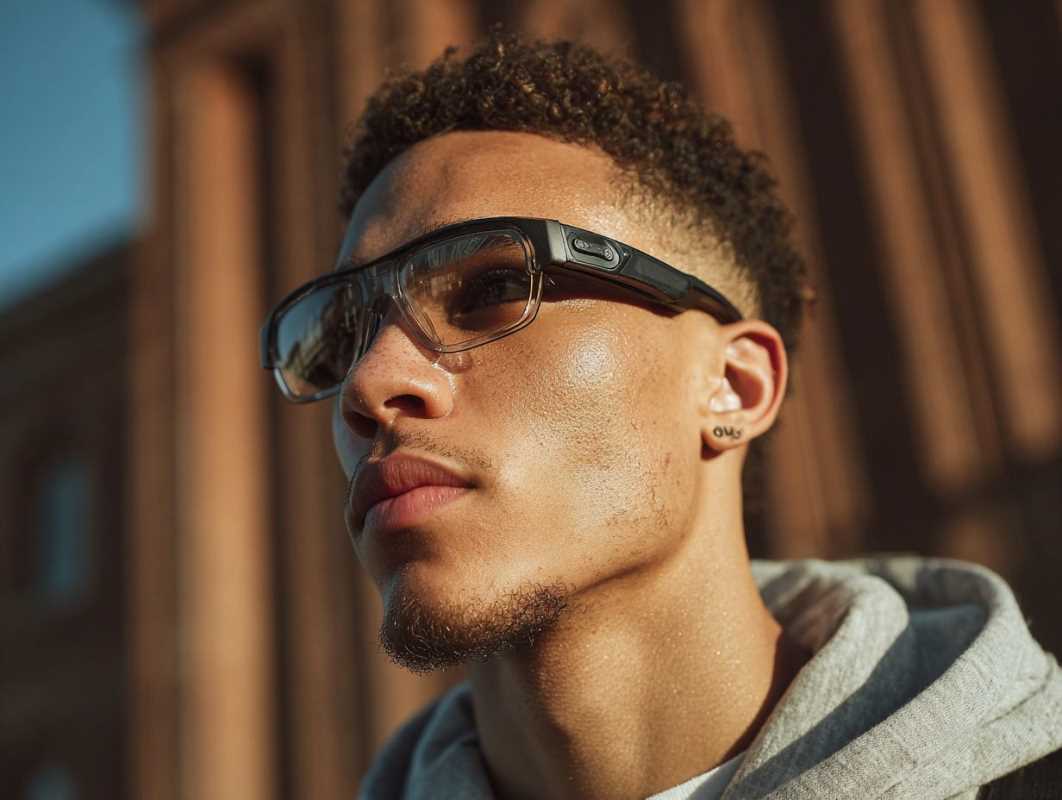The era of smart glasses is upon us, and 2025 has brought an impressive lineup of options for consumers eager to blend technology, usability, and style into their daily lives. These next-gen wearables aren’t just about cool-factor anymore; they offer practical applications for work-life balance, productivity, entertainment, and even augmented reality. Among the top contenders, brands like Meta, XReal, and Viture stand out as leaders in this growing space. But how do these brands compare, and which one is the best fit for your needs?
Here, we’ll break down the strengths, weaknesses, and ideal use cases for each of these leading brands in smart glasses.
1. Meta (Ray-Ban Meta Smart Glasses)
Best For: Social connectivity and casual wear
Price Range: Starting at $299
Meta has successfully turned heads with its Ray-Ban collaboration, bringing smart glasses that look stylish, feel lightweight, and provide essential connectivity features. By focusing on integrating basic, yet useful tech into a fashionable accessory, Meta aims to appeal to a wide audience, including casual users and content creators.
Key Features:
- 12MP Ultra-Wide Camera: Captures hands-free photos and videos, perfect for creators and vloggers.
- Audio Integration: Open-ear speakers coupled with five microphones deliver quality sound for calls and music.
- Meta AI Assistant: Voice-activated assistant available for simple commands and live translations.
- Lightweight Design: Available in multiple sleek Ray-Ban styles like the Wayfarer and Aviator.
Strengths:
- Seamless Style: The Ray-Ban frames look like traditional glasses, perfect for daily wear without drawing attention.
- Content Creation: The built-in camera lets you record from a first-person perspective, ideal for moments you can’t capture with a phone.
- Affordability: With prices starting at just $299, it’s one of the more accessible options for smart glasses enthusiasts.
Weaknesses:
- Limited AR Functionality: While excellent for audio and social media, these glasses lack true augmented reality overlays or advanced features seen in other brands.
- Battery Life: With about 4-6 hours of daily use, travelers or multitaskers might find the battery insufficient.
- Privacy Concerns: The discreet camera raises concerns about surveillance in public spaces.
Who Should Choose Meta?
Meta Ray-Ban glasses are perfect for people prioritizing social sharing, casual use, or lightweight design. They make an excellent entry point for smart glasses newcomers or content creators who don’t need advanced AR capabilities.
2. XReal (Formerly Nreal)
Best For: Productivity and immersive experiences
Price Range: $449-$649
XReal is paving the way for portable productivity by offering smart glasses that double as personal displays. With high-definition virtual screens designed for multitasking and entertainment, XReal’s glasses cater to those who need functionality while on the go.
Key Features:
- 57-Degree Field of View (FOV): Provides an expansive virtual screen experience equivalent to having multiple monitors.
- Resolution: 1080p visuals for crystal-clear quality.
- Plug-and-Play Compatibility: Works seamlessly with laptops, smartphones, and gaming devices like the Steam Deck.
- X1 Spatial Computing Chip: Enables ultra-responsive performance without separate software.
- Optional 6DoF Tracking: The XReal Eye accessory adds head-tracking for 3D AR functionality.
Strengths:
- Virtual Workstation: Perfect for remote workers or professionals needing screen real estate on the go.
- Immersion: The ultra-wide screen and high resolution create an immersive environment for movies and gaming.
- Versatility: Works with a wide variety of devices, from laptops to gaming consoles.
Weaknesses:
- Design: Though functional, the bulkier design lacks the fashion-forward appeal of some competitors.
- Price Point: More expensive than basic smart glasses, making it a premium choice for specific users.
- Learning Curve: Casual users might find the advanced controls and functions overwhelming initially.
Who Should Choose XReal?
XReal smart glasses are ideal for multitaskers, remote workers, and avid gamers. If your goal is to replace bulky monitors or enjoy high-quality streaming and gaming experiences, XReal stands out as a powerful contender.
3. Viture Pro XR
Best For: Entertainment and travel
Price Range: $459
Designed with entertainment and portability in mind, the Viture Pro XR is a sleek AR headset that allows users to transform any space into a personal movie theater. Equipped with exceptional sound quality and a smooth 120Hz refresh rate, these glasses cater to avid travelers, gamers, and media enthusiasts.
Key Features:
- Virtual Cinema: Projects a 135-inch HD display for on-the-go streaming or gaming.
- Audio Partnering with Harman: Provides clear, subtle sound with minimal leakage.
- Adjustable Lenses: Built-in diopter adjustments eliminate the need for prescription inserts.
- Portability: Lightweight, with options to add accessories like the Viture Pro Mobile Dock for console gaming.
Strengths:
- Sleek Form Factor: Slim, comfortable design makes this device travel-friendly.
- Superior Audio: Offers immersive sound without headphones, perfect for quiet environments or media rooms.
- Game-Ready: Ideal for connecting consoles like the Nintendo Switch or PlayStation systems.
Weaknesses:
- Limited AR Applications: This headset focuses more on media consumption than augmented reality overlays.
- Accessory Costs: Features like console connectivity require additional purchases like the Mobile Dock.
Who Should Choose Viture?
People who want an entertainment-forward wearable will love the Viture Pro XR. It’s perfect for frequent travelers or anyone seeking a distraction-free way to binge content or game on long commutes.
Brand Comparison at a Glance:
- Meta Ray-Ban Smart Glasses:
- Best Use Case: Social connectivity and casual wear.
- Starting Price: $299.
- Display: No augmented reality screen or overlays.
- AR Functionality: Basic features like AI assistant and live translations.
- Audio: Built-in open-ear speakers for music and calls.
- Ideal User: Social sharers, casual users wanting style with basic tech.
- XReal Smart Glasses:
- Best Use Case: Productivity and multitasking, including work and gaming.
- Starting Price: $449.
- Display: 1080p virtual screens with ultra-wide 57-degree FOV.
- AR Functionality: Advanced, with optional 6DoF tracking for immersive 3D interactions.
- Audio: High-quality built-in sound designed in partnership with Bose.
- Ideal User: Professionals and gamers seeking portable multi-monitor setups.
- Viture Pro XR Glasses:
- Best Use Case: Entertainment and travel.
- Starting Price: $459.
- Display: 135-inch HD virtual cinema screen.
- AR Functionality: Minimal, focused on media consumption.
- Audio: Immersive sound tuned by Harman, with minimal audio leakage.
- Ideal User: Movie enthusiasts, travelers, and gamers looking for a portable entertainment solution.
Choosing the Right Smart Glasses For You
When deciding between these leading smart glasses brands, it’s important to identify your primary goals. If you’re looking for a fashionable, user-friendly option, Meta Ray-Ban glasses are an excellent entry point. Productivity seekers who want to replace their monitors on the move will benefit from XReal’s expansive virtual displays. On the other hand, those prioritizing entertainment on the go will find the Viture Pro XR’s cinematic features appealing.
Consider Your Priorities:
- Social Connectivity: Choose Meta. These glasses emphasize style and functionality for everyday interactions.
- Work & Productivity: Pick XReal for immersive virtual workstations and efficiency tools.
- Entertainment: Opt for Viture for vivid displays and convenience while streaming or gaming.
With each brand offering a unique take on wearable tech, smart glasses are becoming essential tools that seamlessly integrate with modern lifestyles. Whether you’re a professional, gamer, or someone seeking to stay connected without being glued to your phone, there’s never been a better time to find glasses that match your rhythm.
Whichever you choose, the smart glasses world is ready to upgrade how you see the future.
 (Image source: Midjourney)
(Image source: Midjourney) 





